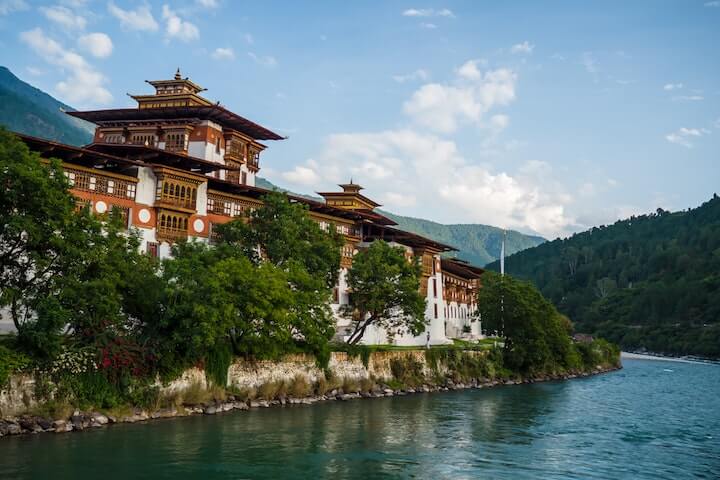The name 'Bhutan' appears to derive from the Sanskrit 'Bhotant' meaning 'the end of Tibet' or from 'Bhu-uttan' meaning 'high land'. Though known as Bhutan to the outside world, the Bhutanese themselves refer to their country as Druk Yul or the Land of the Thunder Dragon. 'Druk' means 'Dragon' and extends from the predominant Drukpa school of Tibetan Buddhism.

The documented history of the Kingdom begins with 747 A.D. with Guru Padsambhava also known as Guru Rinpoche who made his legendary trip from Tibet across the mountains flying on a tigress's back. He arrived in Paro valley at Taktsang Lhakhang also known as Tiger's Nest. Guru Rinpoche is not only recognized as the founder of the Nyingmapa religious school but also considered to be the second Buddha. In the ensuing centuries, many great masters preached the faith resulting in the full bloom of Buddhism by the middle ages. Although sectarian at first, the country was eventually unified under the Drukpa Kagyupa sect of Mahayana Buddhism by saint/administrator Shabdrung Ngawang Namgyal in the 17th century. Ngawang Namgyal codified a comprehensive system of laws and built a chain of Dzongs which guarded each valley during unsettled times and now serves as the religious and administrative centre of the region.
During the next two centuries civil wars intermittently broke out and the regional Governors became increasingly more powerful. At the end of the 19th century, Trongsa Governor overcame all his rivals and was soon afterwards recognized as the overall leader of Bhutan. The Governor of Trongsa, Sir Ugyen Wangchuck, was elected as the first King of Bhutan in 1907 by an assembly of representatives of the monastic community, civil servants and people. Since 18 July 2008, the Government of Bhutan has been a constitutional monarchy with the King being the Head of State and the Prime Minister heads the executive branch of the government.